Not when you’re with the Angels in El Centro…
There is no rest for the weary…especially if you are a member of the U. S. Navy’s demonstration squadron the Blue Angels. After their homecoming shows in Pensacola in November, team members immediately transition to their new roles and another season begins. From mid-November through mid-March, there’s a winter break from airshows due to weather… but not for the Blue Angels. During this winter period, the Blue Angels begin integrating new team members and prepare for the next air show season.
In early January, to get away from everyday life distractions, the pilots and crew head out to their second base of operations, Naval Air Facility El Centro, California. El Centro provides the right environment to build a cohesive team of Blue Angels. It has very stable weather conditions which is key if you need to get a lot of flight time in. During this time, the pilots focus intensely on flying and new members of the crew must prove that they can be part of the team to earn the coveted Blue Angels’ crest.

My journey began with a flight into San Diego and then a 2 hour drive out to NAF El Centro. The base is called a Naval Air Facility because it is not home to one particular squadron or airframe. The base is used by multiple squadrons and aircraft platforms for training purposes.
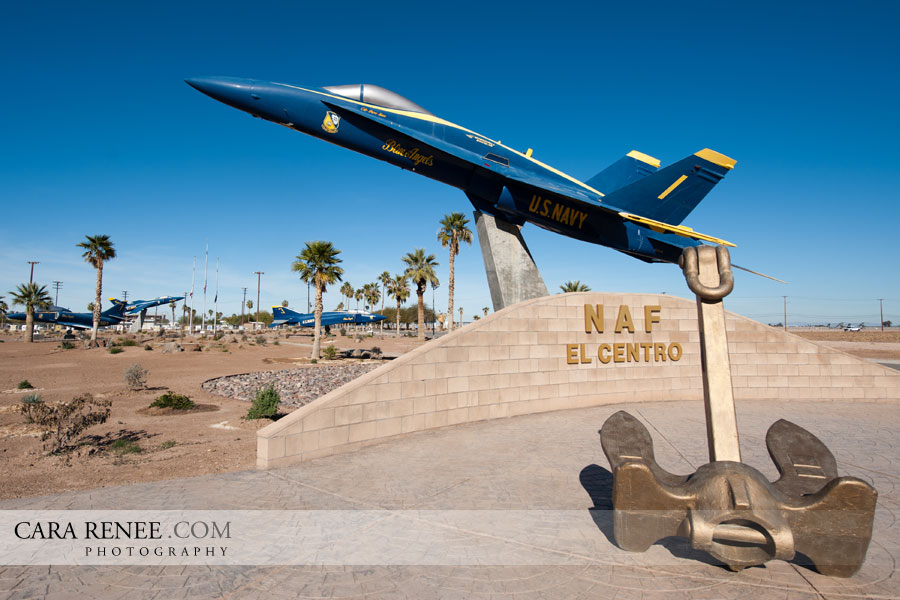
At the entrance of the base, there is a bit of Blue Angel history on static display… some of the team’s previously flown aircraft.
F-11-F1 TIGER 1957-1968 • F-4J PHANTOM II 1968-1973 • A-4FII Skyhawk 1973-1986•F/A-18 HORNET 1987-PRESENT
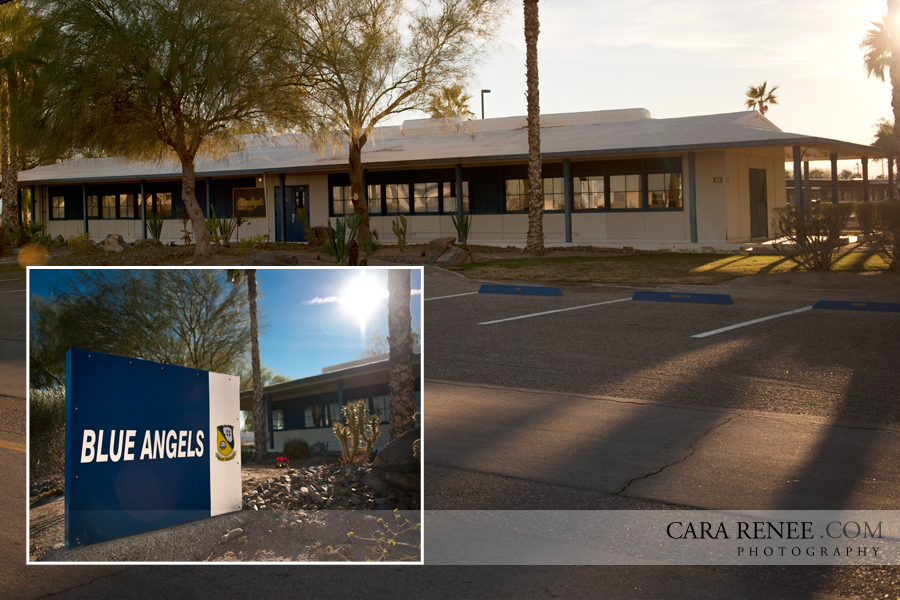
The team spends January through mid-March, in El Centro at their home away from home in Pensacola. NAF El Centro offers consistent weather for the team to hone their skills.
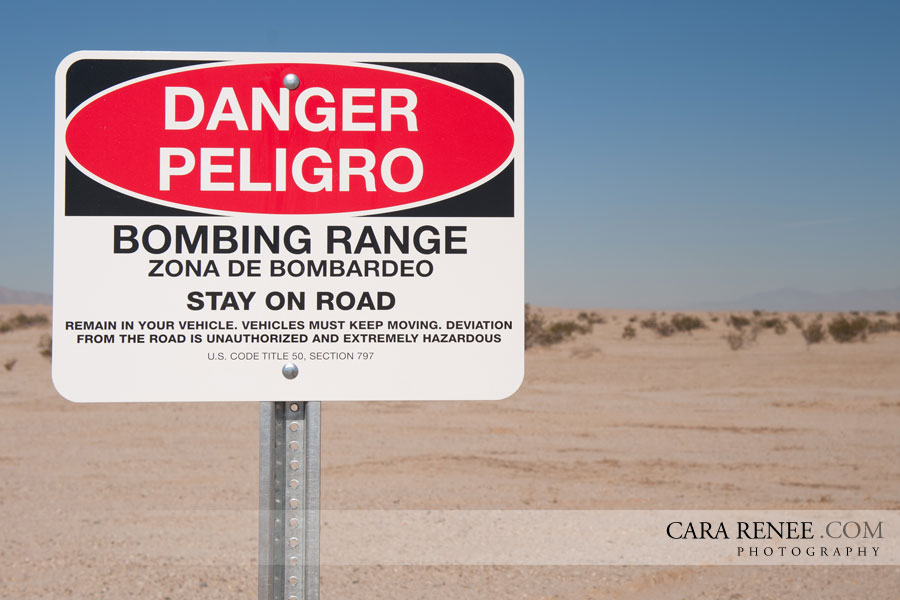
To watch the first practice of the day, we drove through winding roads of the Imperial Valley desert to the bombing ranges of SHADE TREE target where the Blue Angels practice.
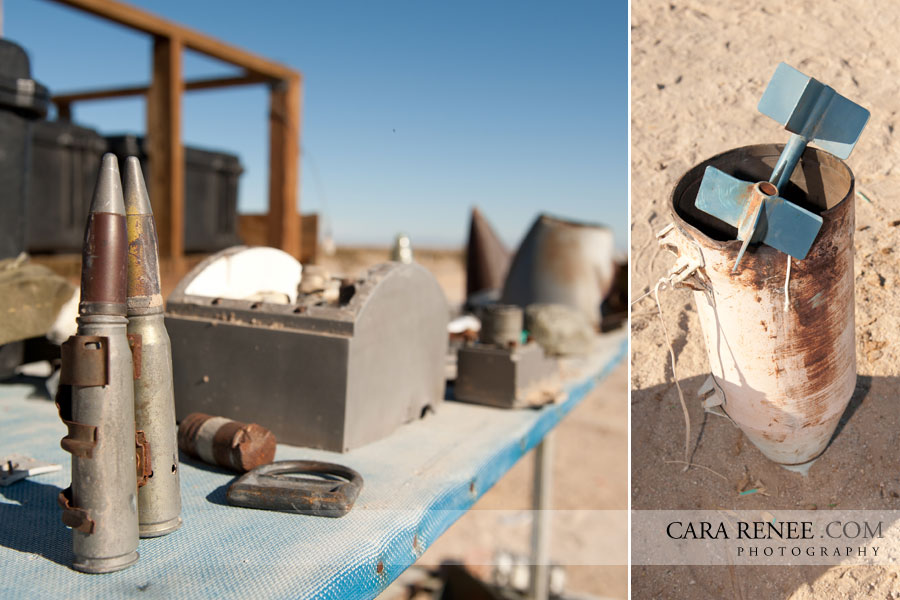
A few of the left over, inert practice bombs from military training exercises were scattered about the area.
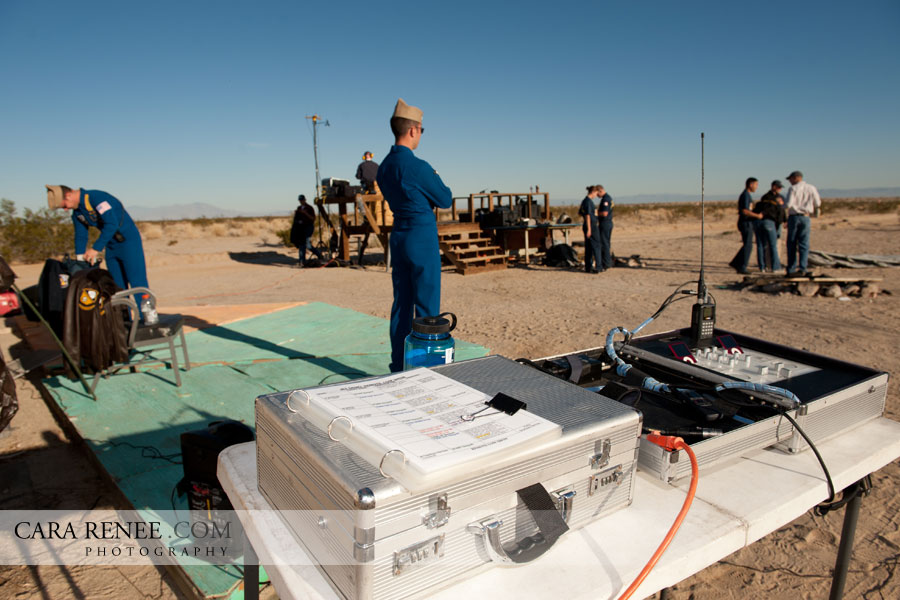
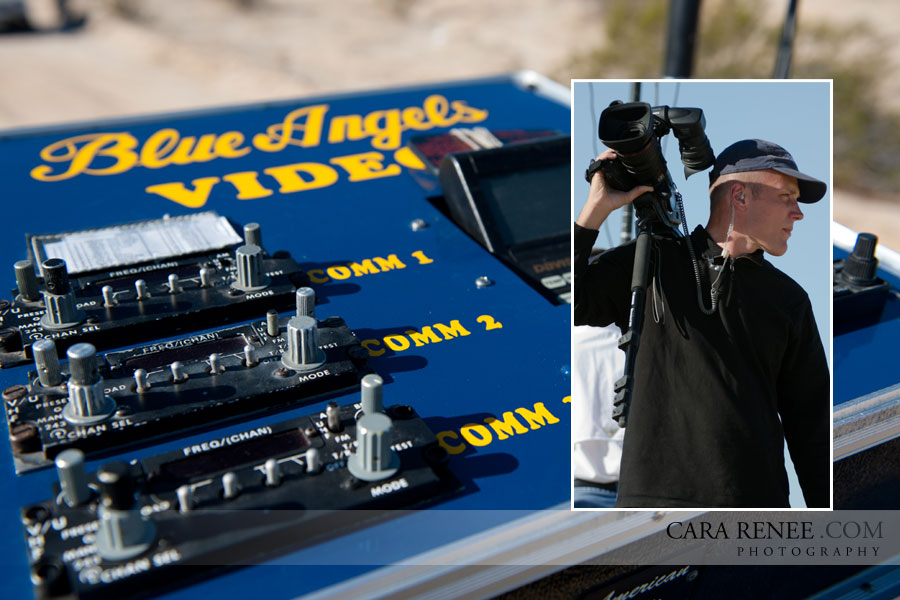
The crew members head out early in the morning to set up all the communication gear prior to each days several practice sessions. AT2 (AW/SW) James Tangman,Video Technician, tapes each practice. The video is immediately driven back to base after each practice so that every detail of the performance can be scrutinized by the pilots upon landing.
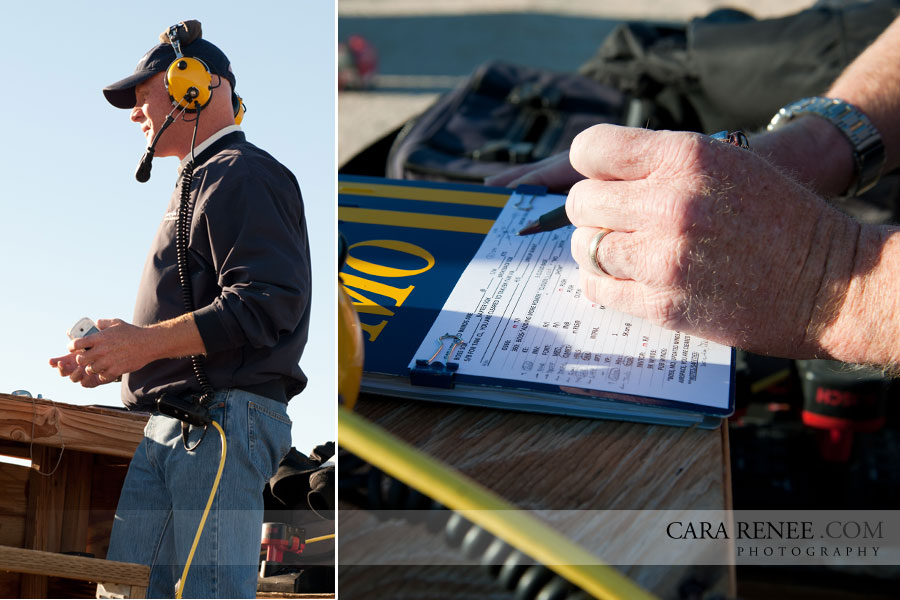
LT John Thompson is the team’s Maintenance Officer. LT Thompson has a check list of the maneuvers and relevant weather conditions, as well as other details that he communicates to the pilots during flight. He helps evaluate the practice from the ground perspective from the airshow center marker.
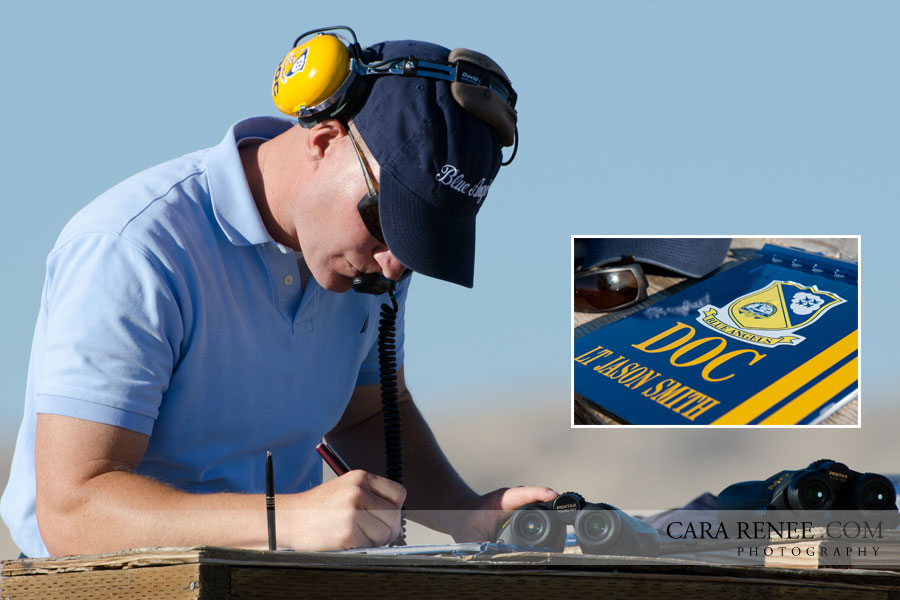
LT Jason Smith, the team’s flight surgeon is also present at the Communications cart.
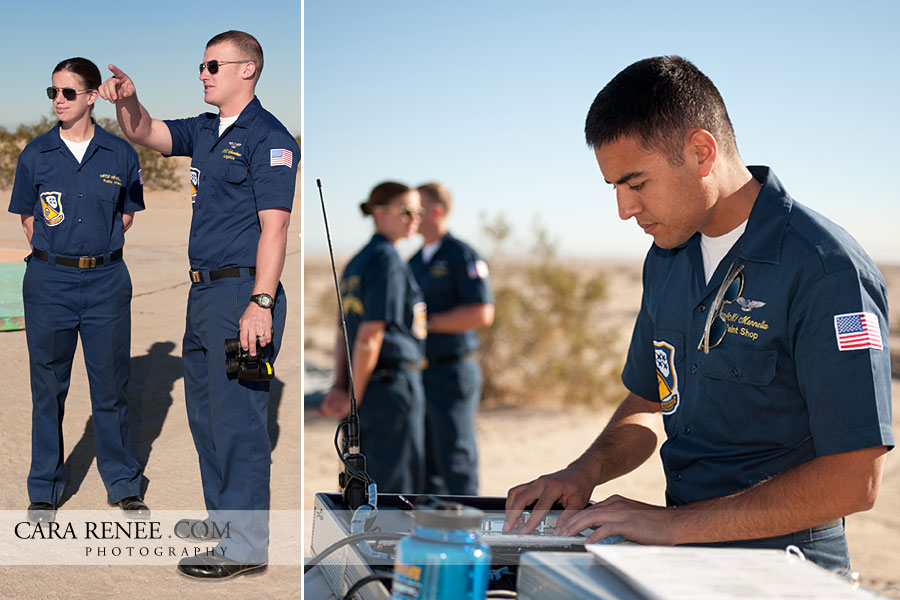
On the left, MC2 Rachel MC Marr Public Affairs, LS3 (AW) Andrew Schweitzer from Logistics. AM1 (AW/SW) Jason Mennella Quality Assurance, works to coordinate the audio so that it is timed with each maneuver and LT Tickle’s narration.
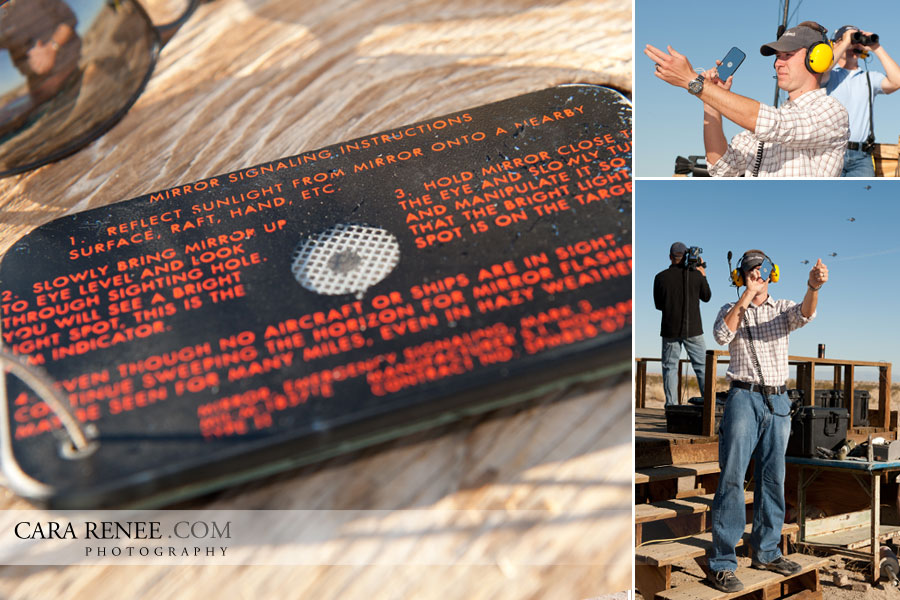
AT1 (AW/SW) Curt Metzger uses a mirror to signal the pilots.
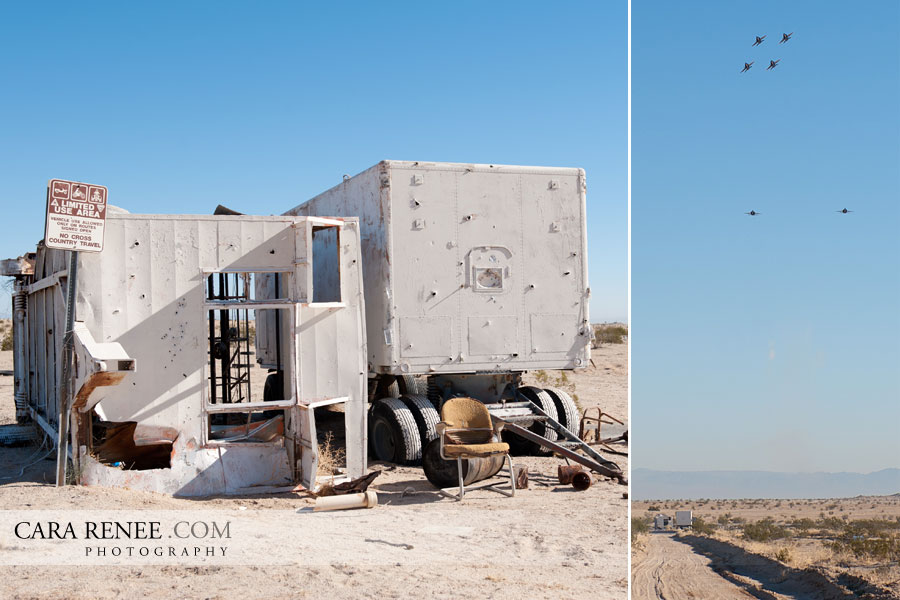
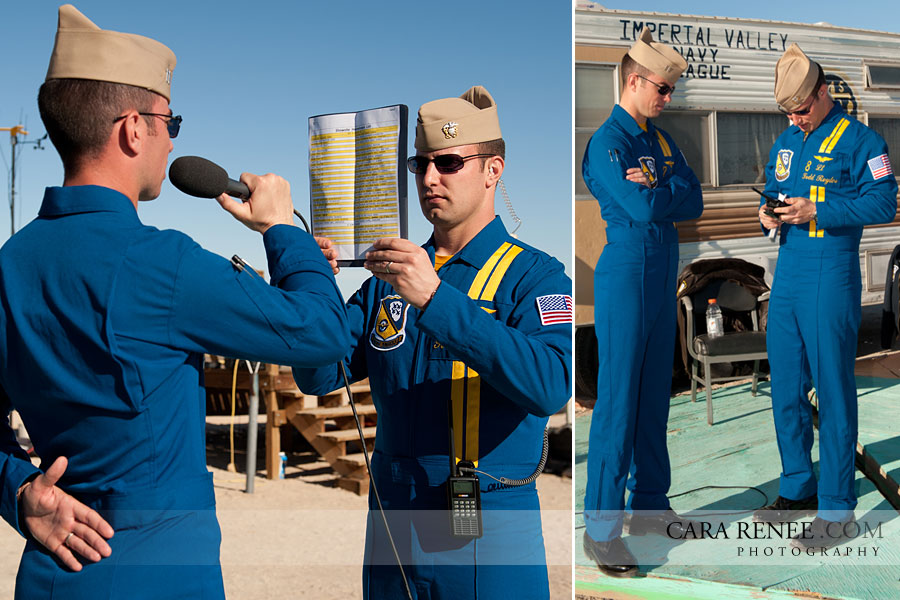
LT David Tickle number 7 is the Narrator for the airshow. He practices narrating the performance while watching the maneuvers.. a challenging task in the dry hot desert.
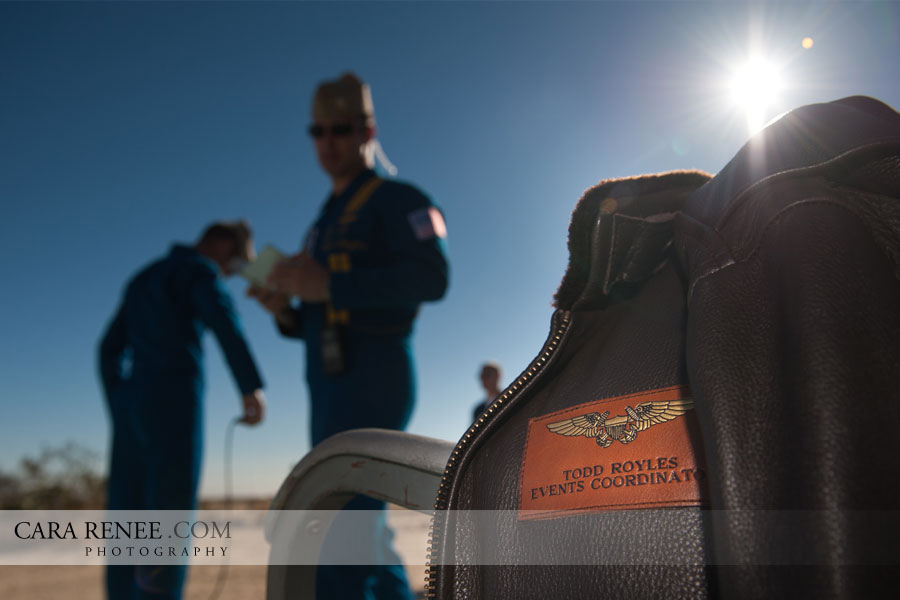
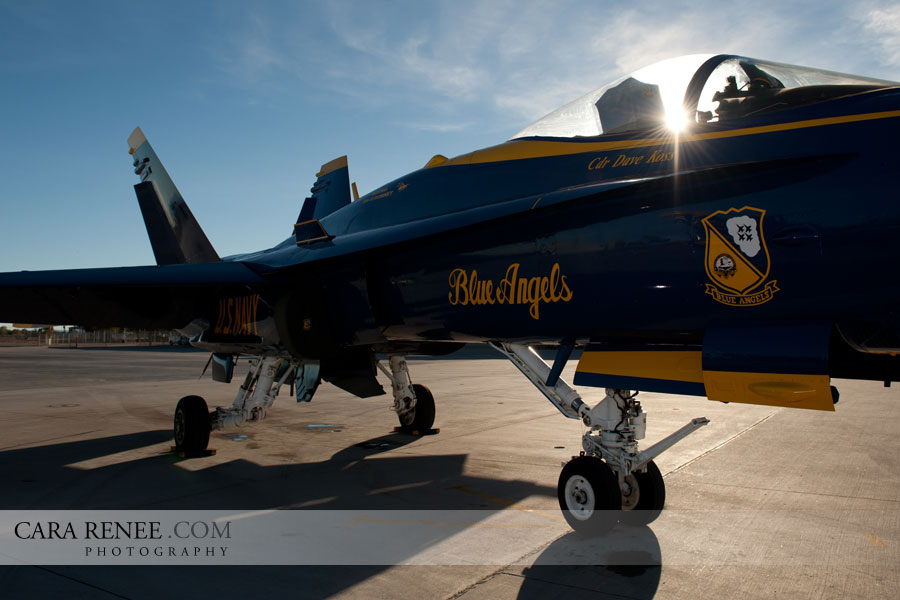
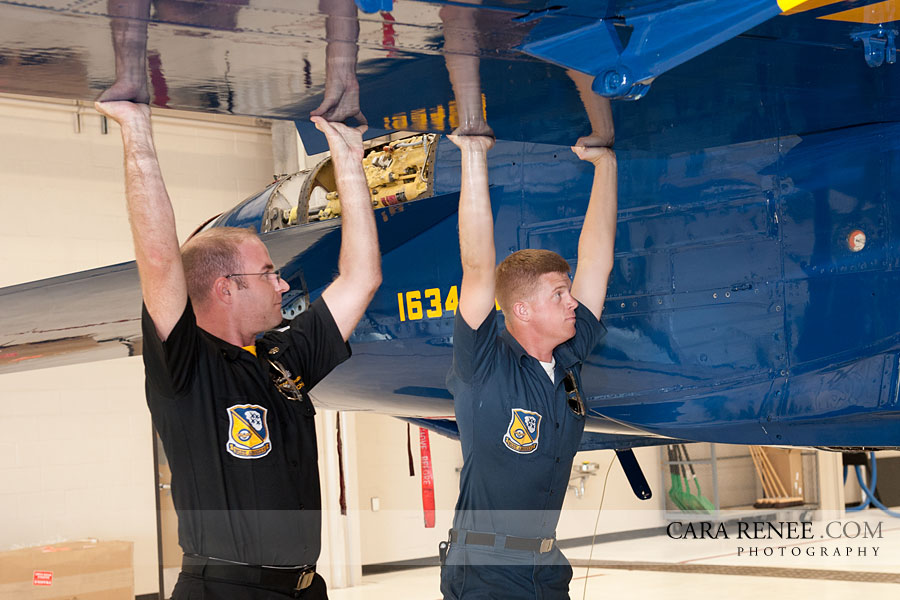
MCC (SW) Kurt Anderson lends a hand to AD2 (SW) Zack Grunwell, Power Plants. Chief Anderson explained that each member of the team is cross-trained and can perform basic maintenance on the aircraft. This ensures that while on the road, during airshow season, any member on the team can jump in and help support basic functions such as oil changes or topping off fuel.
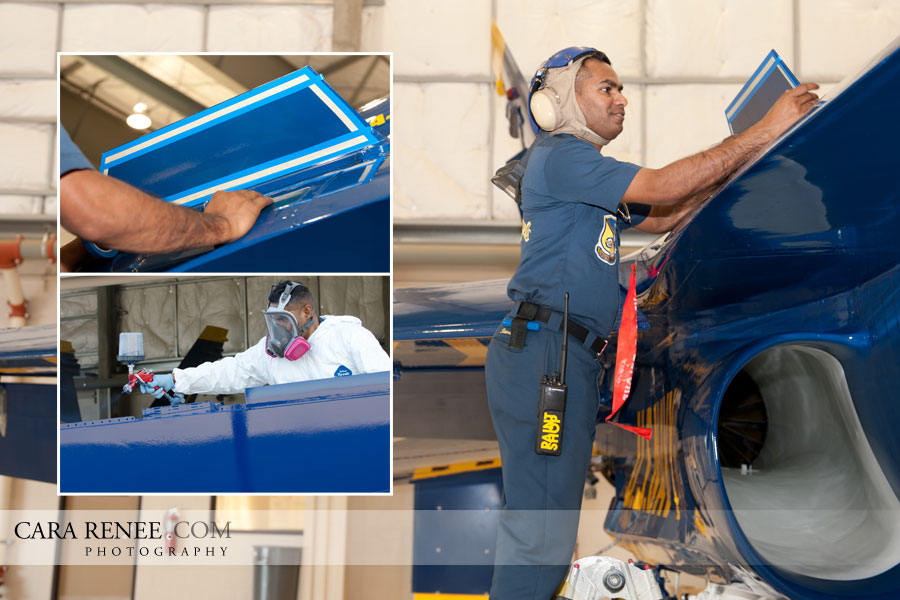
AM2(AW/SW) Harold Ramsahai from Paint Shop prepares to paint yellow markings on the jet. The pilots uses these markings to align and position the jets during formations… referred to as “flying paint”.
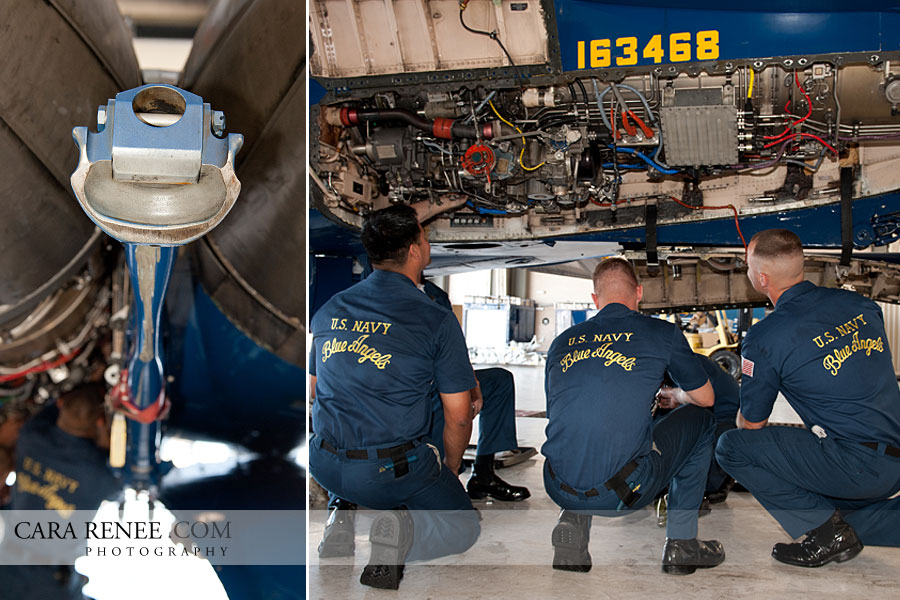
That tailhook looks like it may have actually caught a wire! Normally there is a crew of 240 service members supporting a squadron of approximately 25 jets. The Blue Angels, given the nature of their mission, have about half the number of service members supporting the team.
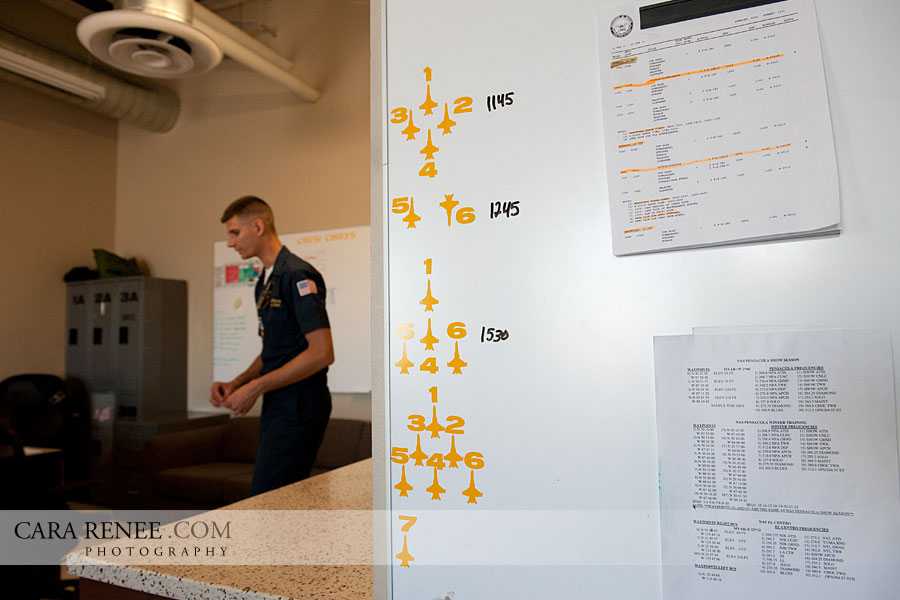
This is the flight schedule… showing the time as well as which aircraft will fly. Opposing solos and the Diamond formation fly separate practices.
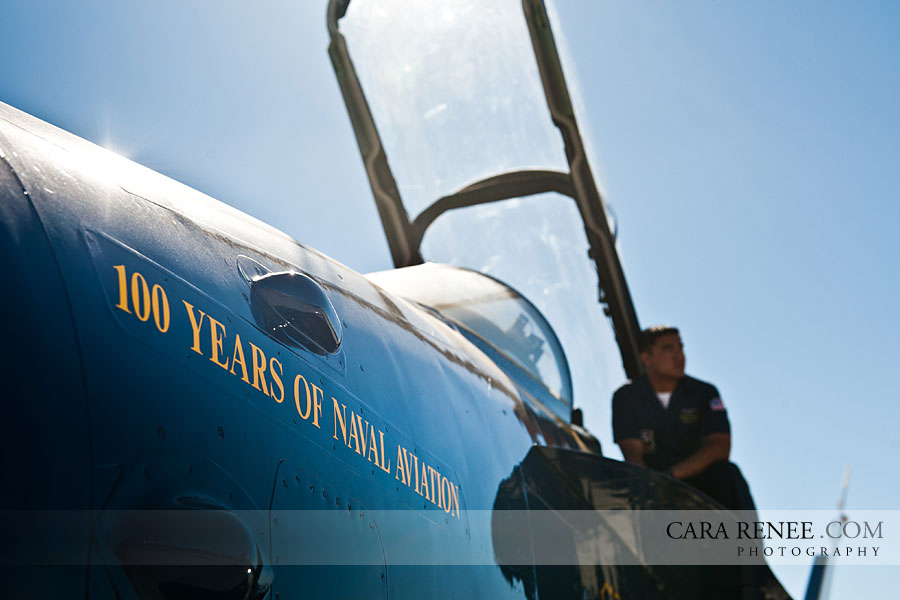
This year is the Centennial of Naval Aviation. A good year to get out to an airshow!
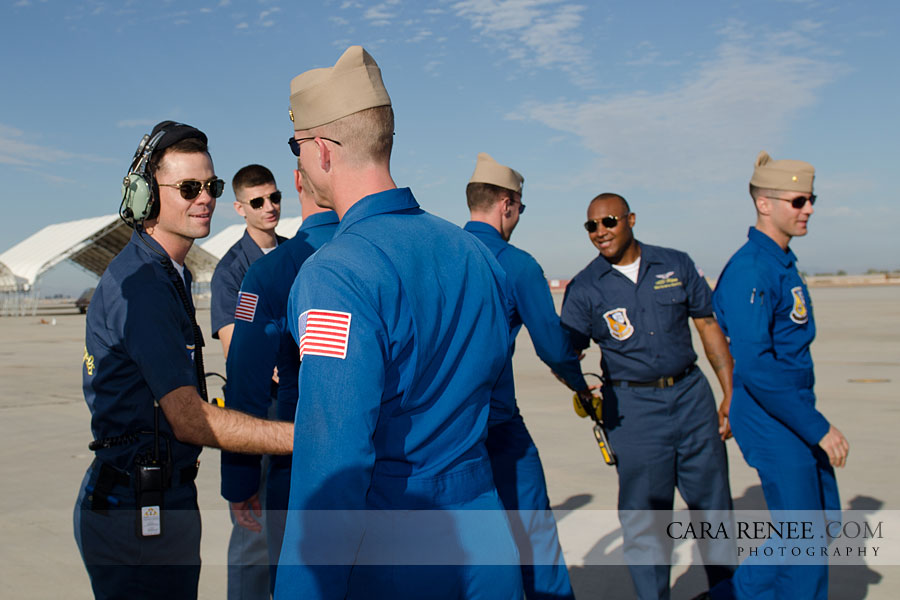
LT C.J. Simonsen, Opposing Solo, shakes hands with AE1(AW/SW) Shawn Adkins from Quality Assurance.
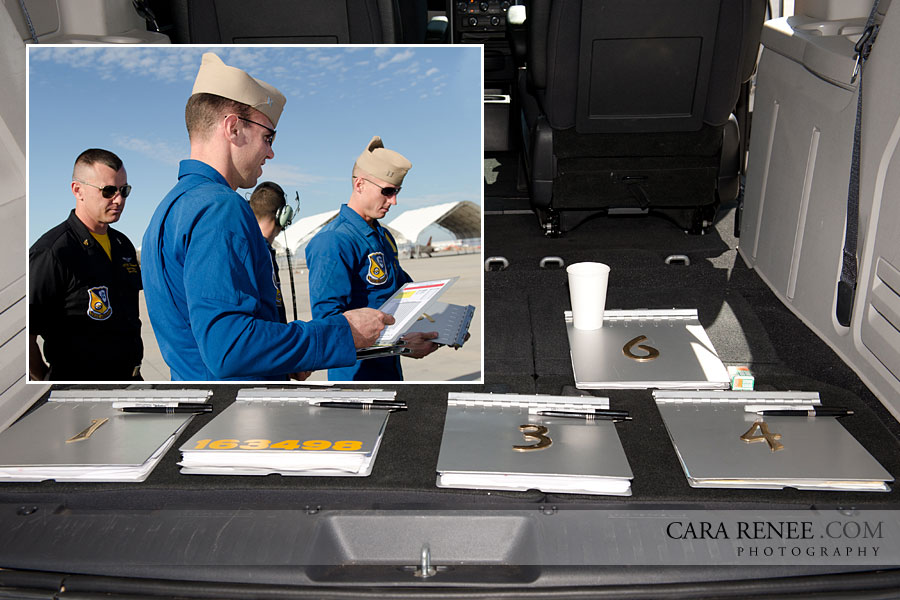
The back of a mini-van serves as an “office” on the road where the pilots check the maintenance reports on their respective aircraft prior to “walking” to their jets.
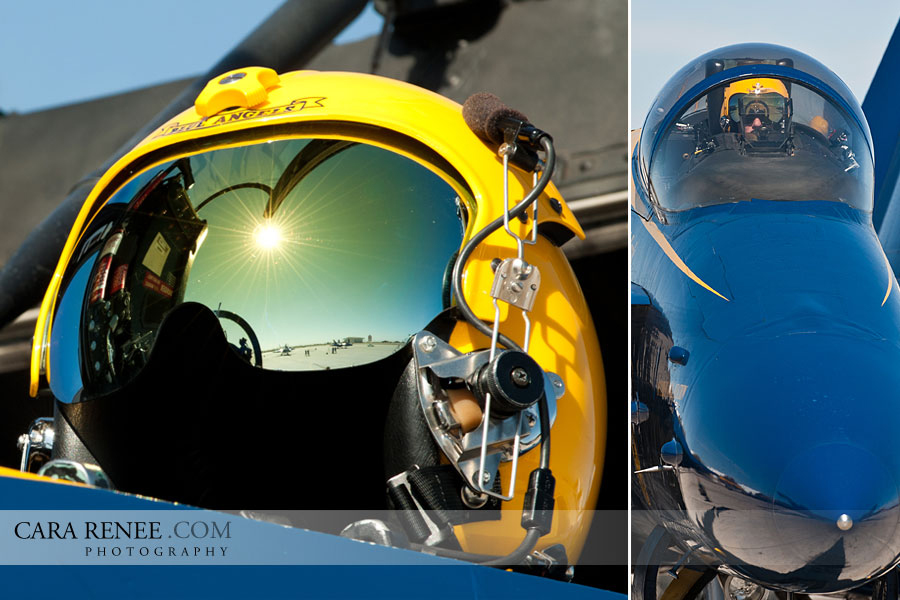
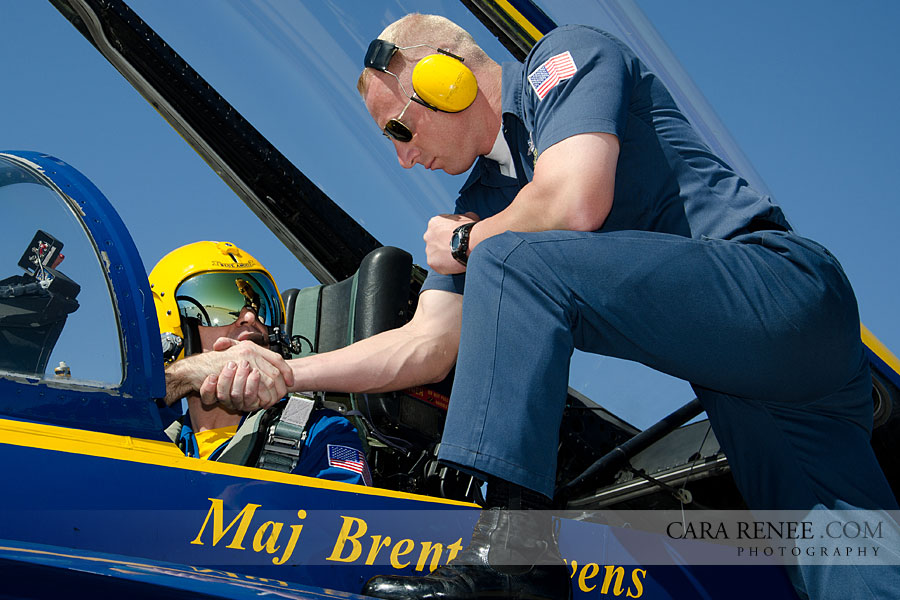
Major Brent Stevens, number 3 jet, shakes hands with Crew Chief AT1 (AW) Anthony Koppi. Each Crew Chief is assigned to an aircraft and pilot. They take pride in ensuring the jet is meticulously maintained.
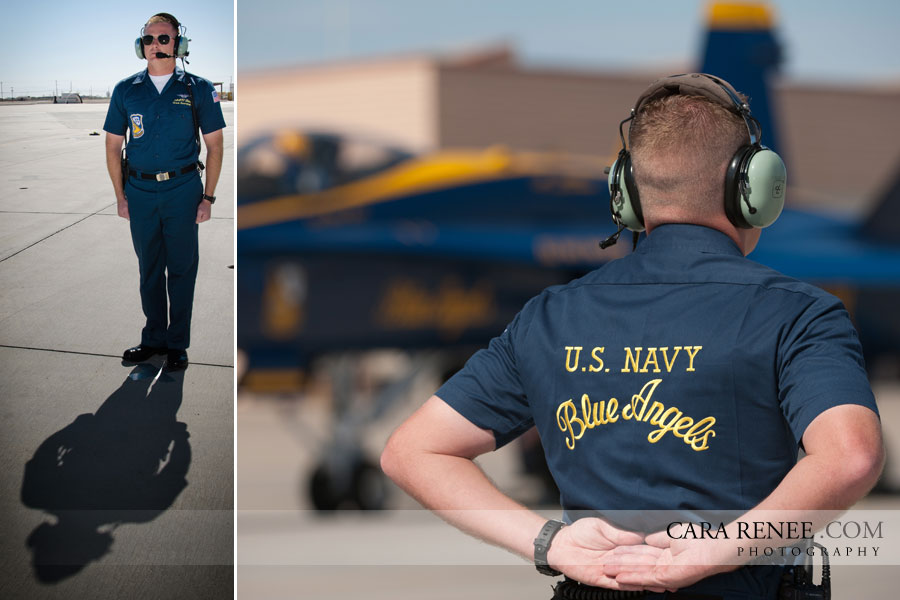
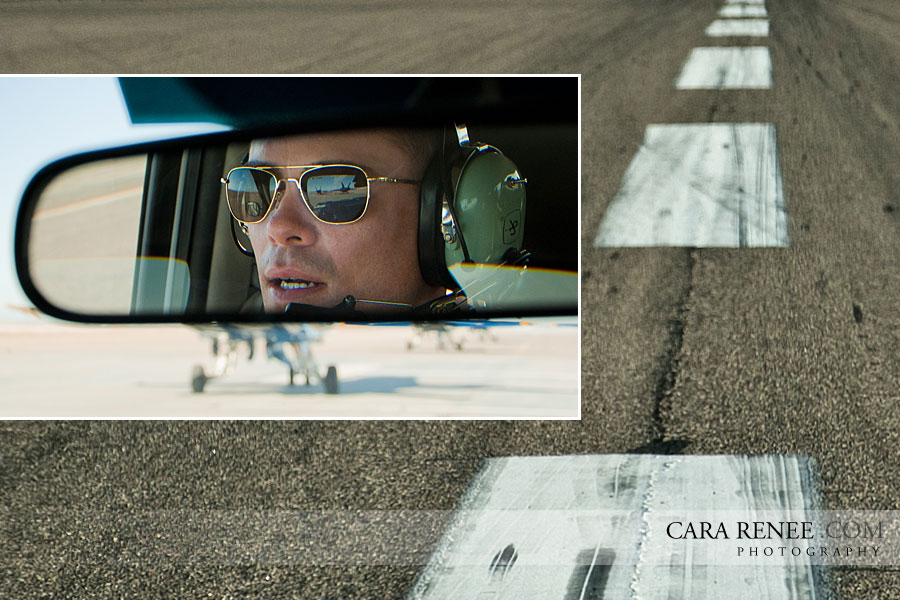
I was able to tag along for a ride in the runway truck as the jets taxied out for take-off.
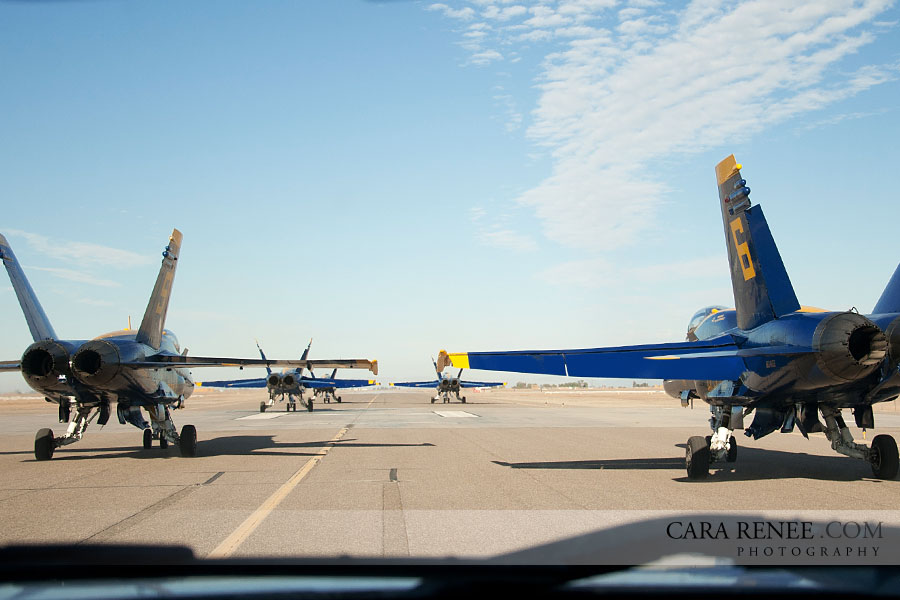
The ground crew follow the aircraft to address any last minute “issues” that may occur.
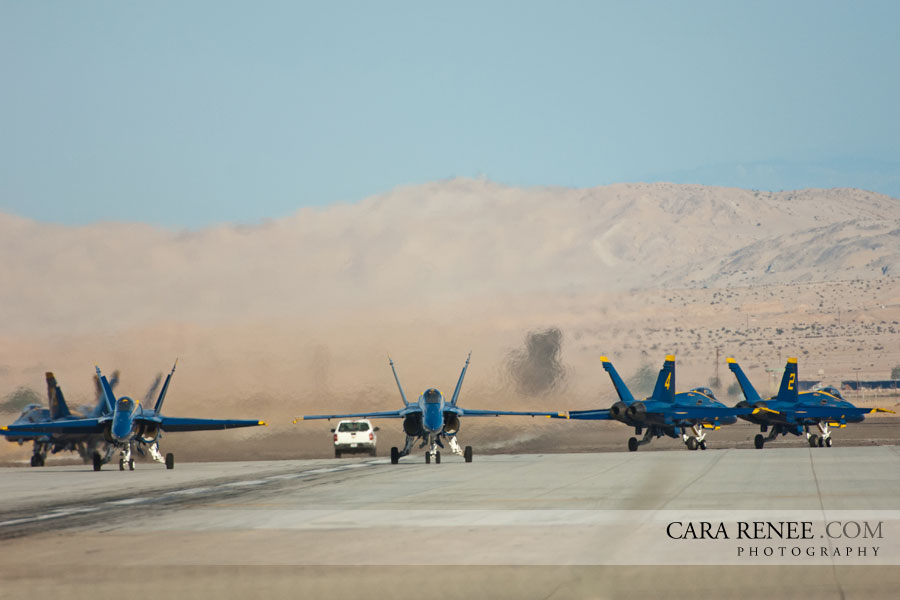
We RACED down to the end of the runway to get ready for the Diamond to take off. Pretty wild ride!
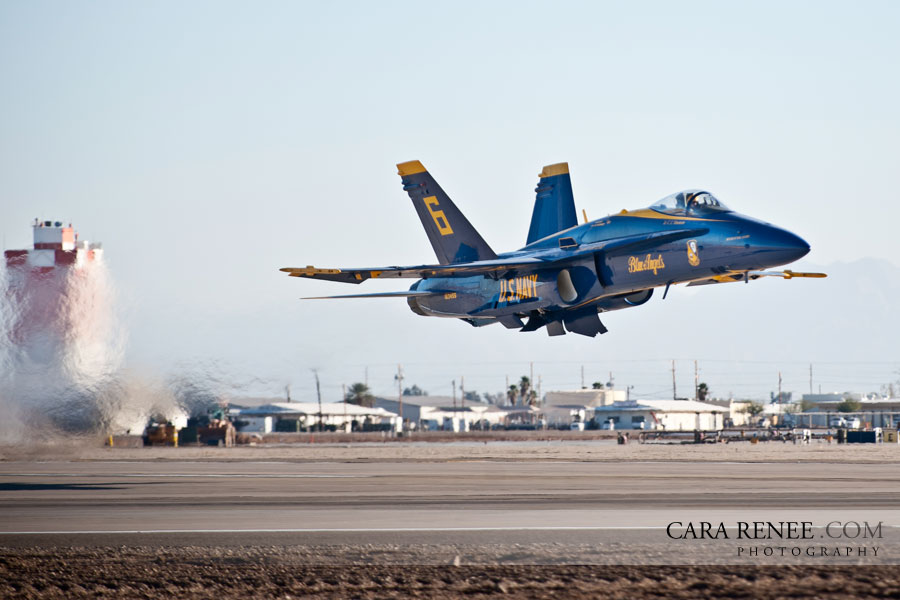
To view more photographs from my Winter Training with the Blue Angels please take a look at the slideshow.
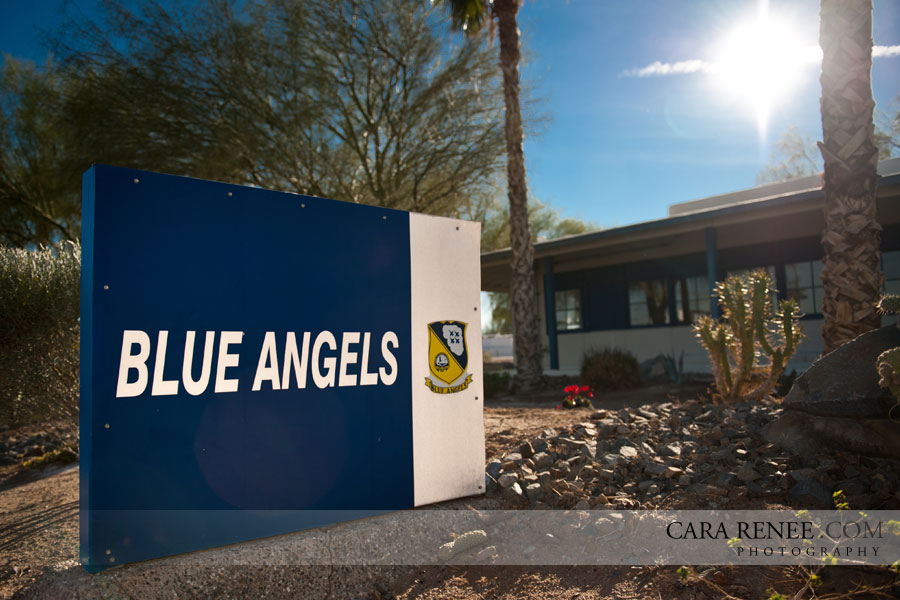
There are several people to thank for allowing me to document the El Centro story.
A special thanks to the members of Blue Angels Public Affairs
LT Katie Kelly, Public Affairs Officer, MC3 Julia Casper, MC2 (AW) Jennifer Blake and MC1 Russell Tafuri. MCC Kurt Anderson many thanks for your generous time, coordinating my visits out to the Imperial Valley, tour around the hanger and answering all my questions about the team. Special thanks to MC2 Rachel McMarr who tirelessly and without one break during my all day long visit… met me very early in the morning at front gate, escorted me to the desert, through the hanger, out to the flight line and onto the runway. I can’t thank you enough for your time and patience.
I appreciate and thank all members of the team for allowing me to come visit during this pivotal time in the team’s training.
To view the entire aviation collection of books, prints and posters click here to visit: The Store
© Cara Renee Photography All rights reserved. Please see Copyright information or contact me at cara@cararenee.com
None of these images are in the Public Domain.
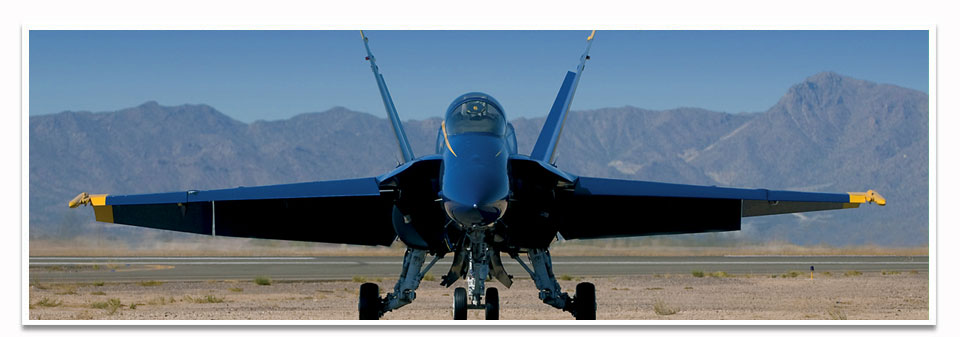


6 comments